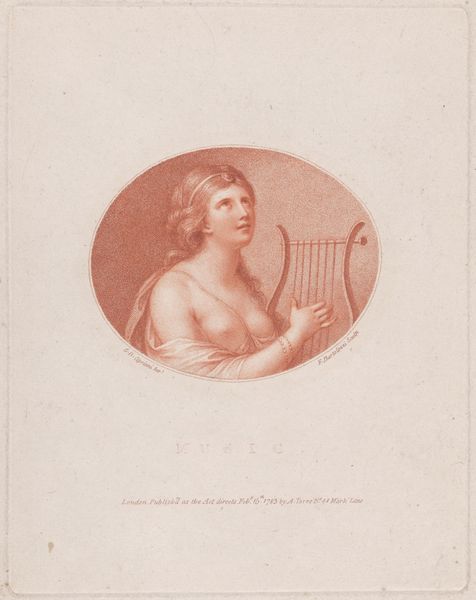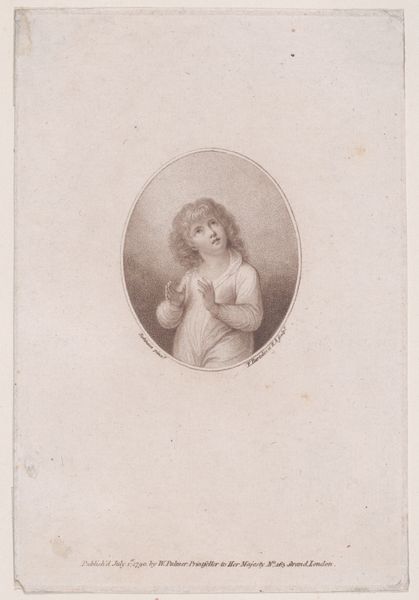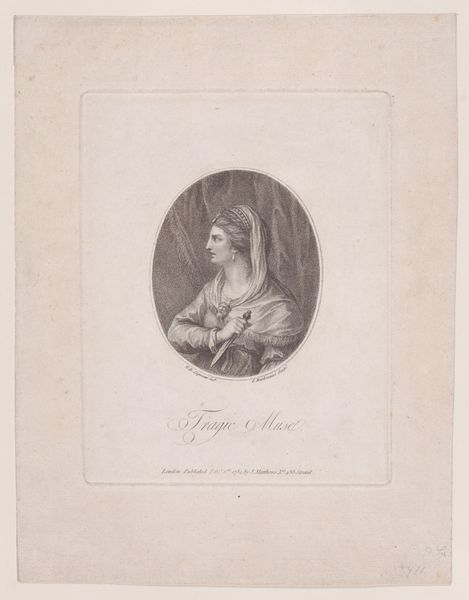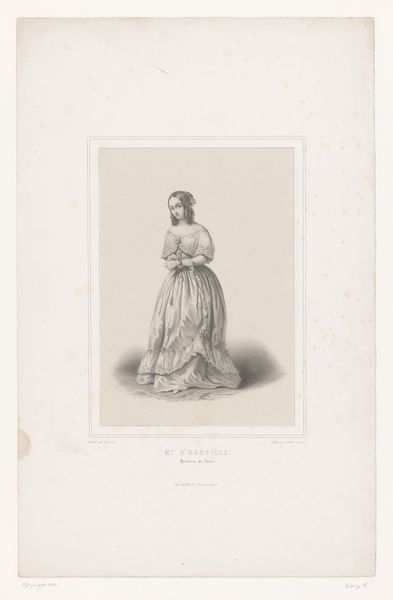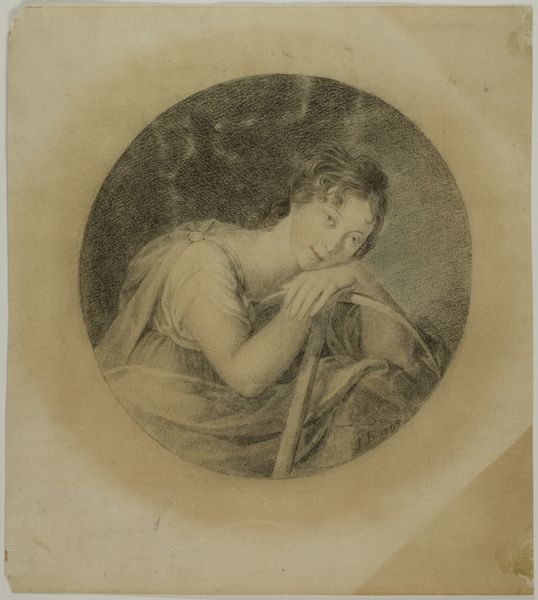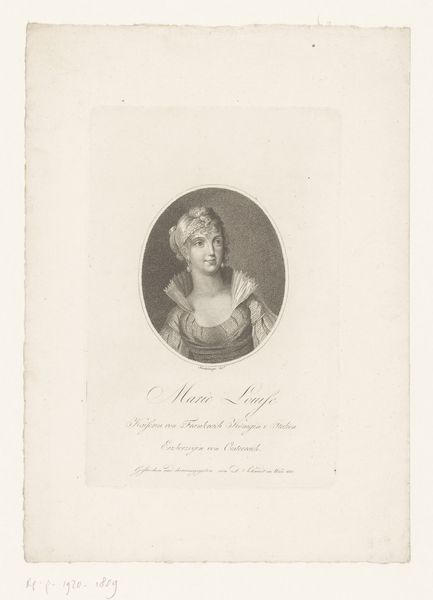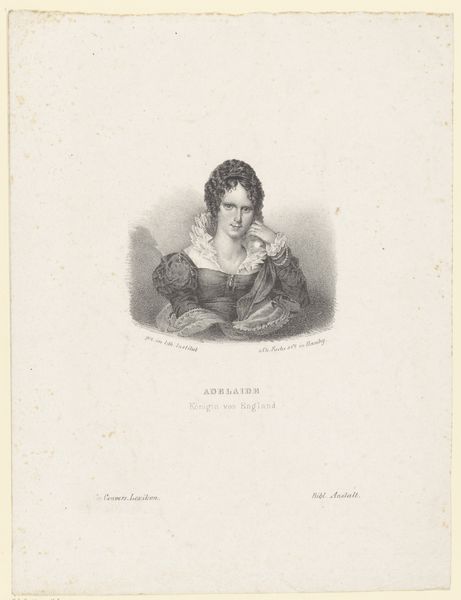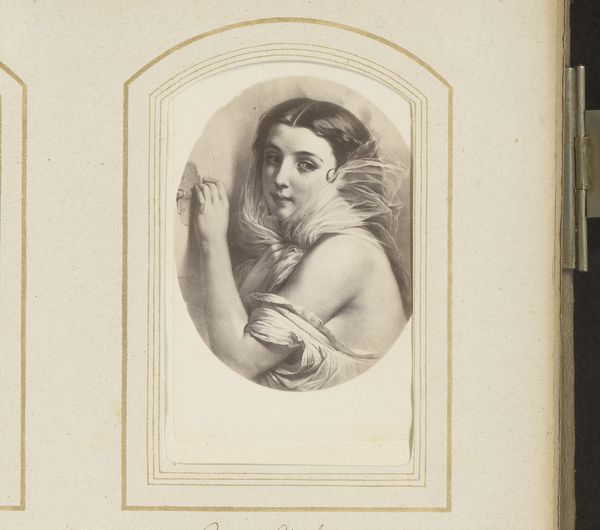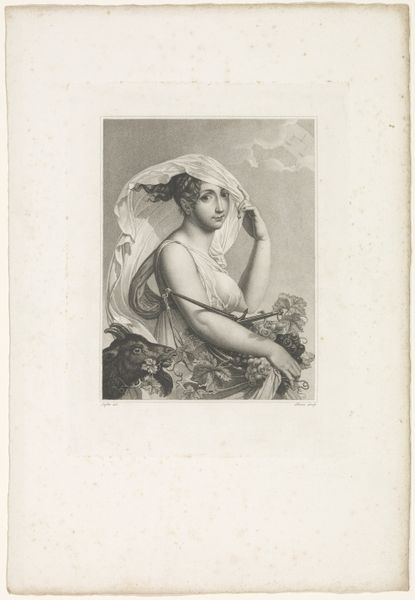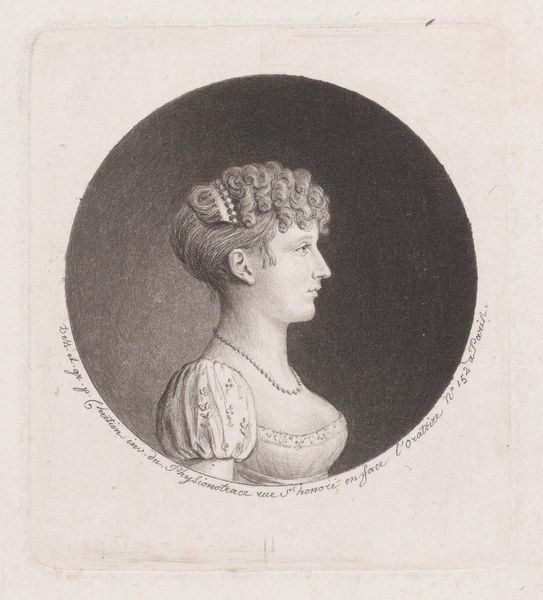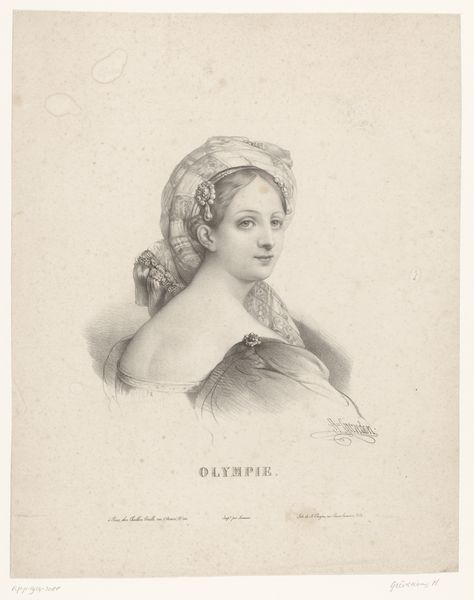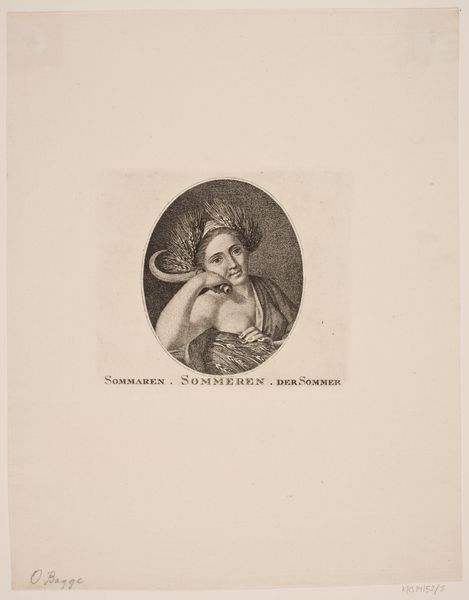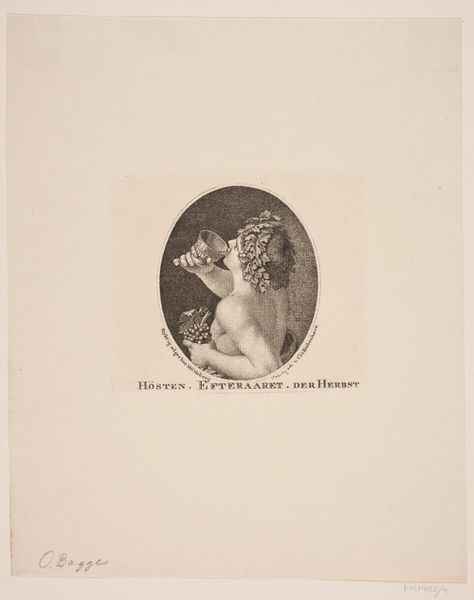
drawing, print, engraving
#
drawing
#
neoclacissism
#
allegory
# print
#
history-painting
#
engraving
Dimensions: Plate: 8 13/16 × 6 7/8 in. (22.4 × 17.5 cm) Sheet: 11 9/16 × 8 1/2 in. (29.3 × 21.6 cm)
Copyright: Public Domain
Curator: Immediately striking, isn’t it? There’s such an airy, ethereal quality about this image. It evokes a sense of reverie and gentle contemplation. Editor: Yes, I'm drawn to the delicate shading. This is "Poetry," an engraving dating back to 1783 by Francesco Bartolozzi. It currently resides here at the Metropolitan Museum of Art. Curator: Bartolozzi certainly captured the Neoclassical aesthetic that was so prevalent. It's fascinating how the lyre, wreath, and upward gaze all contribute to the allegorical reading of this work. We have a beautiful embodiment of poetry here. Notice how the artist created a contemplative mood through subtle choices: the subject isn't just holding the instrument, she's thoughtfully poised. It creates a whole world of emotional and cultural association that ripples out from the image. Editor: The historical context is also really key, isn't it? Consider this was a time when artistic academies held enormous sway. Depictions of idealized figures became a way of signaling classical virtues to the public, reminding citizens of a shared cultural heritage tied to civic values. The printing press allowed art to disseminate rapidly, bringing that sensibility to drawing rooms far beyond the elite. Curator: Precisely. These symbolic visual frameworks held a shared emotional language. People would respond deeply to that. I find the way Bartolozzi used engraving here adds so much texture, depth and atmosphere, as though pulling her from dream. She looks to be channeling some sublime artistic inspiration. Editor: Indeed, the medium played a huge role in this work's life beyond the museum. As a print, it would have circulated widely, influencing perceptions and ideas about poetry for many people. The choice to reproduce it through engravings shapes how the public engaged and encountered the values embodied within it. It raises the question of who got to control that image, and where that image then took hold. Curator: Seeing her here framed in our collection connects us to centuries of aesthetic value attached to it and reminds us how such archetypes were consciously developed to guide sentiment through the symbol. It has shaped who we are now. Editor: A reminder, I suppose, of how art mediates cultural ideals for popular understanding and also its ability to be reworked as we evolve to represent diverse, vibrant experiences now and for years to come.
Comments
No comments
Be the first to comment and join the conversation on the ultimate creative platform.
